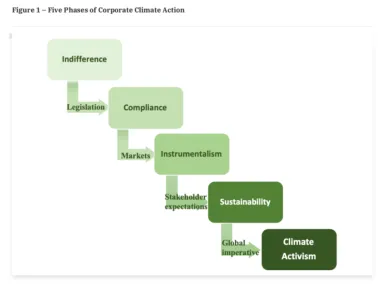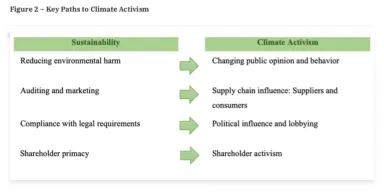
Sustainability is no Longer Enough: How Corporations are Becoming the New Climate Activists
Daniel Korschun, Department Head & Stephen Cozen Research Scholar in Marketing at Drexel University’s LeBow College of Business, and coauthors, argue that tackling climate change requires companies to become climate activists, using their resources to influence policies, public opinion and behaviors.
Key insights
- Climate activism has mainly been associated with individual activists and groups whose strategy is to organize campaigns aimed at pressuring companies and governments to clean up their act. However, in the last few years, a handful of companies have taken a deeply transformative approach by becoming climate activists themselves.
- Today, many well-intentioned companies are working to achieve sustainability: they seek a longer-term compromise between people, profit, and the planet by changing their conduct to minimize negative environmental impacts. This isn’t enough to address the urgency of climate change because it is an inward-looking approach, which disregards the collective nature of environmental challenges.
- The chances of conquering the mammoth task of fighting for our planet’s survival rest on the willingness of companies to embrace a collaborative solution through climate activism. Climate activism can be achieved by means of four pathways: changing public opinion and behaviour; supply chain influence; political influence and lobbying; climate and shareholder activism.
Summary of Complete Findings
As the importance of setting environmental goals grows in U.S. firms, insights from marketing experts point to the role of companies in aiding transformative societal change.
Each of the last four decades has been warmer than any decades that preceded it. Higher temperatures are leading to changes in the frequencies and severity of extreme weather events, to disruption of food supplies, and to migrations. The year 2020 was the sixth consecutive year with 10 or more natural disasters that cost more than $1billion each. These events resulted in large revenue losses for businesses.
To tackle climate change, industry must play a significant role because businesses are a major contributor to this environmental challenge. 71 percent of greenhouse gas emissions are traced back to the energy sector alone, with the commercial sector accounting for another 20 percent.
Companies have made sizeable commitments to sustainability, often implementing changes in operations and committing to reducing emissions. However, while most companies are well intentioned in their efforts, they see climate change through a company-centric lens. This insular approach is not effective to achieve the transformation required to mitigate such a large collective problem.

The second stage, compliance, coincided with the first widespread acknowledgment by companies of the importance to conform with international guidance, such as the 2007 Kyoto Protocol and the 2015 U.N. Sustainable Development Goals. Compliance often involved doing the bare minimum to meet regulatory requirements.
When more companies realized the potential business opportunities around climate change, a third stage, instrumentalism, began. This involved tapping into the market for sustainable products and services with the aim to increase profitability.
The penultimate stage of this evolutionary model, sustainability, is where most well-meaning companies are today. These companies assess and implement the best response to trade-offs between competing interests in their stakeholders’ network. They try to decrease negative impacts (e.g. reducing emissions) and increase positive impacts (e.g. replenishing ground water supply). Their actions are inward-looking: companies should consider not only the pressure from stakeholders but also the potential to influence the public more broadly.
Tackling climate change requires a shift to stage five, climate activism, which involves using the power of a company’s brand and its resources to promote transformative change in the public, consumers, governments, other businesses, and all stakeholders. While some forward-looking companies have become corporate activists, there are not enough of them yet.
Figure 2 describes the four pathways that a company can take to move from sustainability to climate activism. These are intended to mobilize people and organizations, including suppliers, consumers, policy makers, and investors.

In conclusion, this study challenges companies to take transformative decisions and see beyond their insular business model. The ability of society to overcome the impact of climate change depends on the willingness of companies to choose a collaborative and active approach.
“Sustainability is no Longer Enough: How Corporations are Becoming the New Climate Activists” by Debbie Haski-Leventhal (Macquarie University), Daniel Korschun (Drexel University), Martina Linnenluecke (Macquarie University), published in California Management Review, November 2021.


